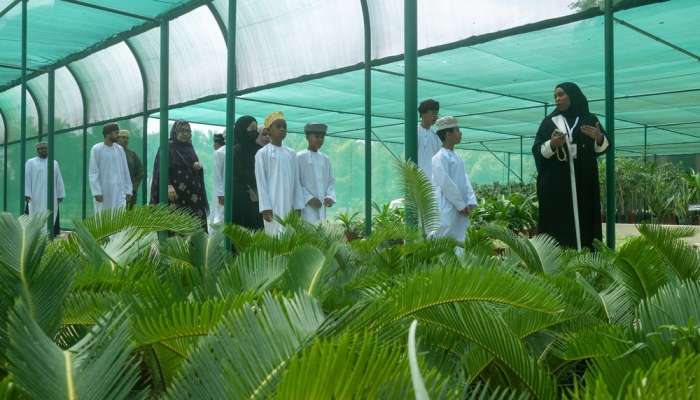
Salalah— Razat Royal Farm in the Wilayat of Salalah, Dhofar Governorate, has begun welcoming visitors to its newly inaugurated tourist trail, which was opened this evening.
The trail offers an opportunity to explore the farm’s diverse agricultural spaces, tropical and ancient trees, and various farm products, establishing it as a comprehensive tourist destination managed with precise technical and scientific standards.
Accompanied by tour guides, visitors began their journey through several stations introducing them to different crops and plants, culminating in an integrated station that brings together the farm’s components in one location, complete with rest facilities and services.
The farm boasts a wide agricultural diversity, including varieties of bananas—among them the "Razat" banana—alongside a banana gene bank and a ripening unit. It is also home to coconut, papaya, grape, fig, custard apple, and Omani lemon trees, in addition to tropical and subtropical fruits and various vegetables.
The farm further features indigenous trees such as frankincense and fig, as well as ancient species like baobab, giant ficus, and tamarind, alongside medicinal and aromatic plants including turmeric, ginger, and basil.
Additionally, the farm serves as a sanctuary for birds and houses a historic agricultural jar dating back to the era of Sultan Said bin Taimour. The farm is irrigated by the Razat spring through a network of traditional and modern aflaj (irrigation channels).
The trail’s opening reflects a broader commitment to supporting agritourism and enhancing food security. The Royal Court Affairs has ensured the tourist trail offers an enriching experience for visitors while highlighting agriculture’s role as a pillar of sustainable development.
Razat Royal Farm is located on Sultan Qaboos Street in the eastern part of Salalah. Spanning approximately 1,085 acres—900 of which are cultivated—it stands as one of the most prominent sites under the Royal Court Affairs, combining agricultural production with ecological and historical diversity.